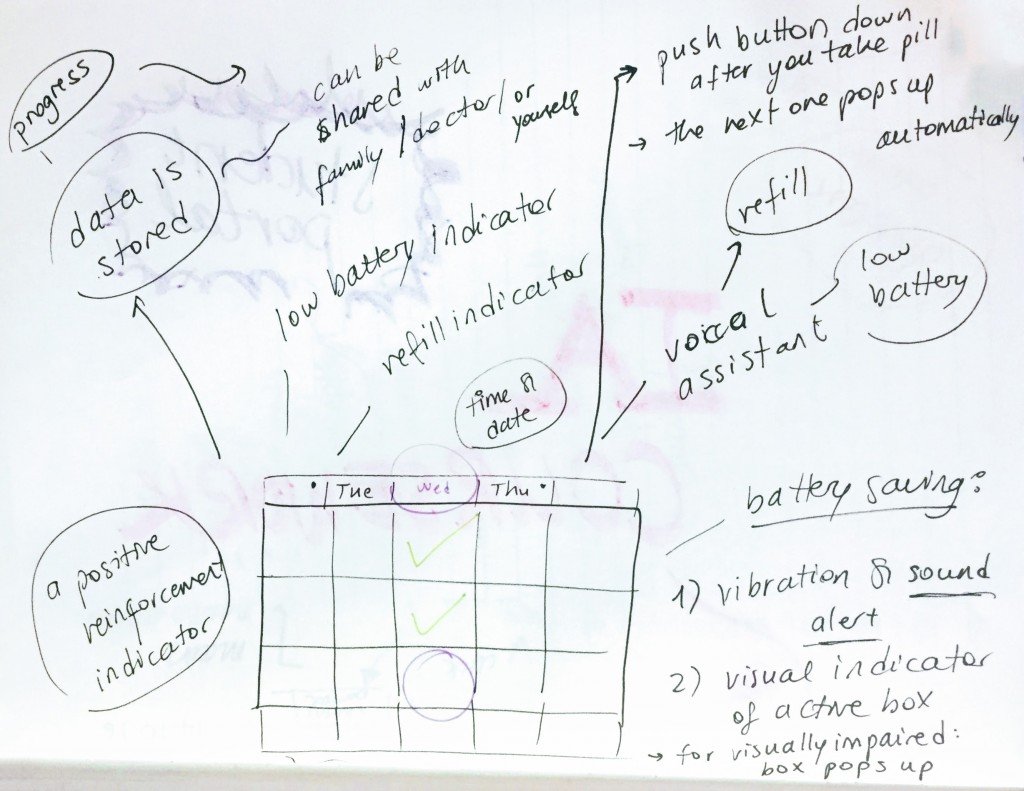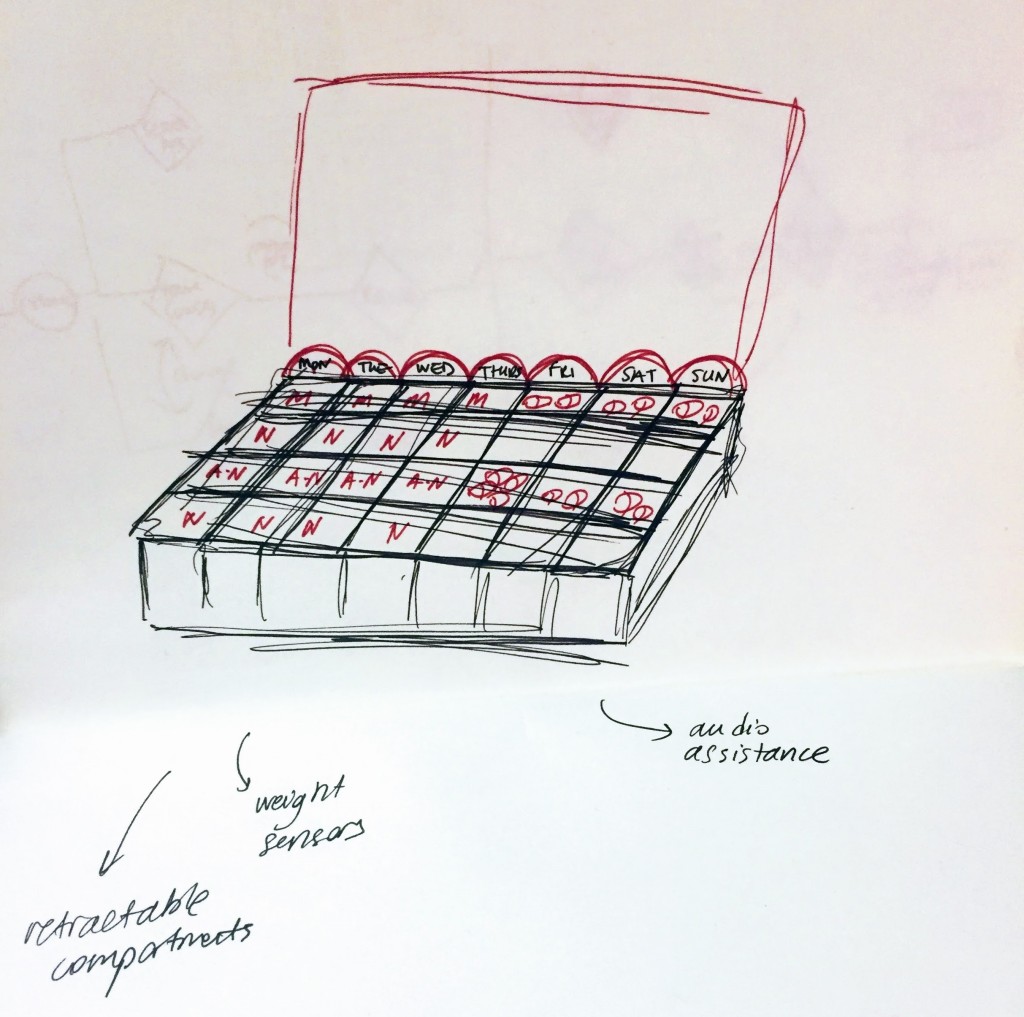As a part of the tutorial sessions for our Interaction Design module, our goal was to design a digital dosette box. We worked in groups to tackle this task.
The Challenge: Designing a new digital dosette box, focusing on its role as an external memory through visual representation, and thinking about the interactions and functionalities this new product may offer.
Target Users: Elderly people.
USER RESEARCH & PERSONAS
Initially, we were given results of a user research that illuminated the daily lives of individuals taking regular medication. The knowledge we gained from these excerpts informed our personas.
We tried to formulate our PRIMARY PERSONA according to some of the insights we gathered (a few keywords):
- active person (goes out frequently)
- lives alone
- on regular medication (carrying them around becomes an issue)
- low perception of danger regarding missed doses (therefore the persona needs a sort of reminder to show him/her which pills are absolutely VITAL to take, and to remind him/her that missing doses might actually be dangerous)
We also decided to create a SECONDARY PERSONA with much more issues (ex: not active – not self-sufficient), in order to solve the problem for the worse.

HIERARCHICAL TASK ANALYSIS
After creating our personas, we were given a specific user scenarios to think about. We were asked to create user journeys for those users, describing their routines and motivations.
We prepared an Hierarchical Task Analysis to represent each step in this particular situation.
EXISTING USER JOURNEY – STORYBOARD
Working on user scenarios, we were asked to depict the journeys of the user in a storyboard format. This study came in very handy in helping us understand the users’ behaviour.
Below is my initial sketch, depicting Mrs. Owen’s daily life.
Here is a more refined, digitalized version of the existing user journey.
FUTURE USER JOURNEY – STORYBOARD
Based on Mrs. Owen’s, as well as our personas’ existing routines and pain points, we were asked to individually sketch a future user journey that would inform our dosette box designs. I aimed to come up with a digital dosette box design that could address several issues like refilling the box once empty, walking the user through such tasks, reminders for taking the pills etc.
CONCEPTUAL DESIGN
After this point in the design process, we started to work individually. The future user journey helped me formulate a general idea for the digital dosette box I was to create.
At first I was focusing on the idea of creating a digital dosette box which also featured a digital screen. Yet, thinking about user groups that weren’t too tech savvy, I decided to come up with digital interface that wasn’t too complex to interact with.
My main focuses in designing this digital dosette box were:
- Indicators of date and time: Knowing which day of the week it is, and the time is crucial for users to take their medication.
- Audio assistance: Alerts and reminders for all users in general, but in particular for individuals with poor eyesight. Audio assistance brings a level of extra caution into this design, aiming to make sure that important tasks, such as: taking pills, refilling the box, or charging the device aren’t forgotten.
- Data Storage: For personally keeping track of one’s progress, or sharing it with the doctor.
- Extractable Compartments: For those who pursue an active lifestyle and have a hard time carrying their dosette boxes around. Compartments (one for each day), run on limited battery life, though enough to last for a day. They may be extracted from the main platform and easily carried around.
- Visual Indicators: Visual indicators that show which pill is to be taken when the time comes.
INTERFACE DESIGN IDEAS
As another alternative, I thought of offering a screen-based version of the dosette box as well, for individuals that prefer to engage in more advanced interactions.
This interface would be featured on an digital screen, which is integrated into my original dosette box design. Together with the box itself, this interface aims to address the design goals I formulated in the Conceptual Design section.
Additionally, I demonstrated a few other details with the interface design:
- Contacting your doctor.
- Accessing advanced information regarding prescriptions and medication routine.
- Positive reinforcement for keeping up with the medication routine.













Be First to Comment